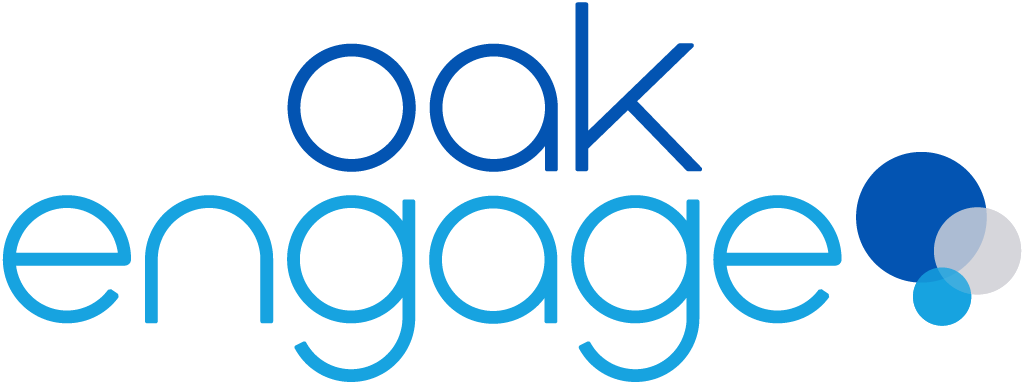Positive workplace culture can be demonstrated in many ways, but perhaps the most real measure of success is employee retention. While there are ups and downs in almost every job from time to time, often the key reason people will stick around is because they feel valued, respected and seen by their employer.
A positive company culture is one which fosters encouraging business practices and looks after everyone, no matter who or where they are. Our recent Toxic Workplace Report identified that 73% of employees agree that they feel a sense of belonging to their organisation and its values, and 71% feel valued for the work that they do.
Ways to support employee retention
So, employers, how do we get it right? Below we have listed five of the top ‘green flags’ of positive workplace culture, which we hope will help others to reflect and consider if there are any new ways to retain employees that could be explored.
1. Open communication
In the working world, we’re all adults. We can often tell when someone is skirting around the truth. Honesty is the best policy, and it becomes easier to be open when there is trust that flows both ways, from colleague to employer, and vice versa. Often when reviewing employee retention, communication, or lack thereof, can be the first thing that triggers a downturn in job satisfaction.
When change is coming in an organisation, whether it is a new company benefit, new tech, a relocation, merger or acquisition, there will always be questions. These questions need to be answered to keep employees engaged. Communicating as much as possible about these changes could be done through company-wide updates, news alerts on intranet systems, or more sensitive information could be initially disseminated in smaller settings, such as team meetings.
Providing a space for employees to ask questions, voice their opinions or make suggestions about new products or services will enable an open dialogue which could ultimately lead to better outcomes.
The next step is to ensure that employee voices are heard, and listened to.
“What is your company culture? What does it feel like to work in your organisation? What can I expect from my employee experience? What does safe and respectful mean to us here? Get people to share what they expect and create alignment through the organisation.” - Jenni Field, Business Communications Expert & Author
In our Toxic Workplace Report, an impressive 95% of employees reported feeling safe to offer candid feedback. This implies a shift in power dynamics towards a more flattened, transparent organisational structure where employees’ voices are not only heard but actively encouraged.
2. Reward and recognition
We all want to feel appreciated. While some staff may thrive getting their head down, others may seek praise upon completion of every task. There is a balance to find, but it remains so valuable to reward those who are great at their job, whether they shout about it or not. In our recent Employee Happiness Survey, a third of people reported that their place of work doesn’t recognise employee achievements.
“Employee of the Month” style rewards have been around for decades and will always have a place in the right environment. By nurturing a positive workplace culture, we can recognise the little victories, the small helping hands and the praise for doing a good job, so that everyone can get a share of the recognition each month, rather than just one person.
Reward and recognition initiatives can be implemented with ease as a way to retain employees, and even without a budget. It can be as simple as setting up a social feature on your intranet to encourage colleagues to recognise one another for their support on projects, such as sending them a public ‘thank you’ on the platform. You then have the opportunity to scale and offer more rewards based on the number or quality of mentions an employee has over a period of time.
3. Employee retention
We spend so much of our life at work, that we should enjoy it for the most part. It’s no surprise, then, that the main driver of employee happiness is a healthy work-life balance.
It’s one thing finding the right person for the right role; keeping them is just as important. In fact, employee retention is much more cost effective and beneficial than recruitment, especially when you have exceptional talent within your organisation that it would be detrimental to lose. The cost of recruitment and training up new employees can impact timelines and work capacity of those who need to train them up.
An employee retention strategy is something that should be considered all the time, not just when there are concerns that employees are unhappy, disgruntled or looking to leave. By keeping existing employees happy, ensuring that they feel seen and heard, fairly rewarded and reimbursed, and offering professional development opportunities within their role or career path, there becomes less incentive for them to leave.
Ways to cultivate a positive workplace culture
A positive company culture is one that actively supports all colleagues, whether they want to progress or are happy where they are. Hosting social events during working hours can help bring colleagues together to build connections and unwind without excluding those who have extra commitments such as caring responsibilities. Multiple events could also be held at different times throughout the day or week so that those working any variation of shifts are able to join in.
Offering opportunities for like-minded employees to share their successes and hobbies can also boost morale and build connections, even when they may not work at the same site, such as communities or hubs on your intranet. A prime example of this is Five Guys; with a workforce spread across Europe and deskless employees on all different shift patterns, they worked with Oak to build their employee app, “Chatty Patty” , to bring their workforce together:
“Oak is almost addictive. It feels like a window into our restaurants. We’re celebrating promotions, we’re celebrating new hires to the business and that gives us confidence that our teams feel good.” - Bastian Bauermeister, Head of Operations at Five Guys.
4. Technology and innovation
When we have the right tools and tech to perform in our role, we can be more efficient in how we work. This leads to higher productivity and employee satisfaction, both with their role and within the wider company, supporting a positive workplace culture.
A fantastic example of how up to date technology can streamline processes is the work we did with NatWest Group. Before we crossed paths, they had multiple intranets on old legacy platforms which caused confusion and frustration for their 80,000 employees. We utilised algorithms to enable NatWest to notify their people of relevant news, showing staff a personalised news feed, reducing noise.
By reducing noise on the news feed and with all users on a single platform, internal communications have been transformed for the better, allowing employees to absorb news and updates more efficiently, and navigate the system with ease:
“Oak Engage has transformed the way we communicate, delivering a single news feed which aligns with our ‘one bank’ strategy. Consolidating our offering has created a clear channel for communications and a single source of truth. We're already seeing positive engagement from colleagues.” - Alan Harris, Director of Internal Communications at NatWest
5. Collaboration
In our Toxic Workplace Culture Report published in September 2023, 71% of employees admitted they are likely to work from home in order to avoid toxic office cultures. That is almost three-quarters, which poses a significant barrier to team collaboration.
When there appears to be tensions within a team, try to not only find a way to diffuse the situation, but ways for colleagues to collaborate with other teams in cross-departmental projects. Having a fresh project to concentrate on, ensuring that workload is accounted for, can provide new opportunities for colleagues to interact and collaborate with those that they may not usually get a chance to work with.
Consider setting up a Wellbeing or Equality, Diversity and Inclusion committee, where colleagues from across the organisation can come together to push forward change toward a more positive workplace culture within the business.
The more we can nurture strong and healthy inter-departmental and cross-business relationships, the greater the impact of a strong company culture, and ultimately, employee wellbeing and satisfaction.
We can talk you through all of the features which can be implemented to foster a positive workplace culture and promote a proactive employee retention strategy through engagement and recognition. Click below to register your interest for a free demo by our expert team and we will be in touch to arrange this with you.



